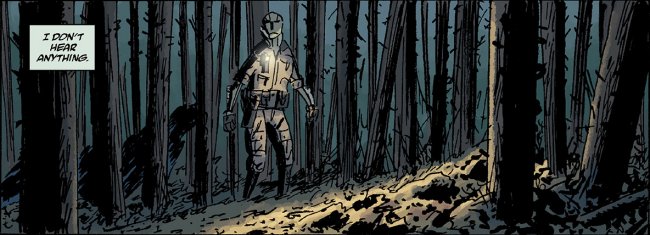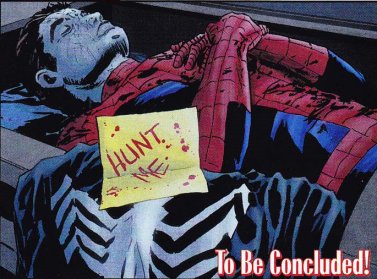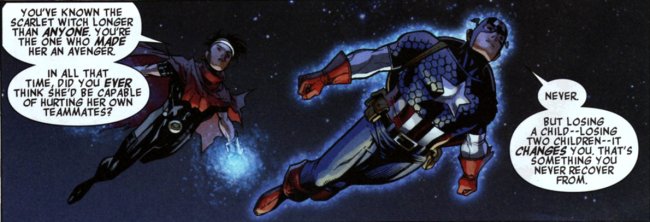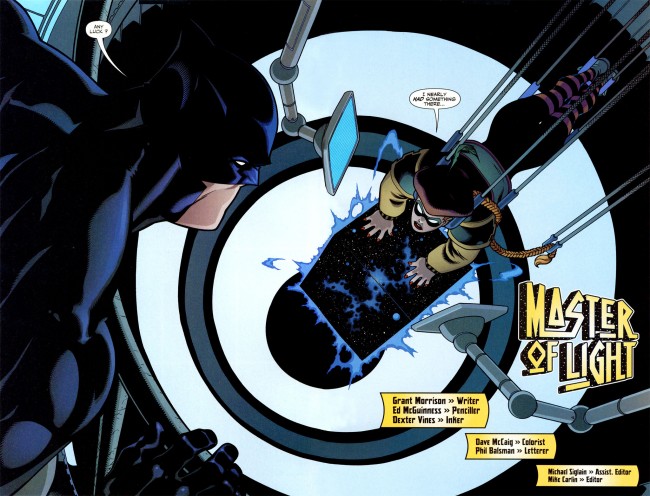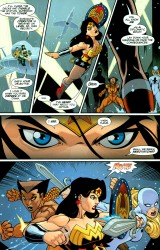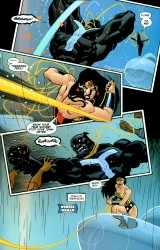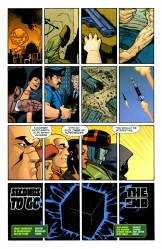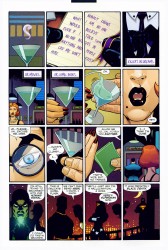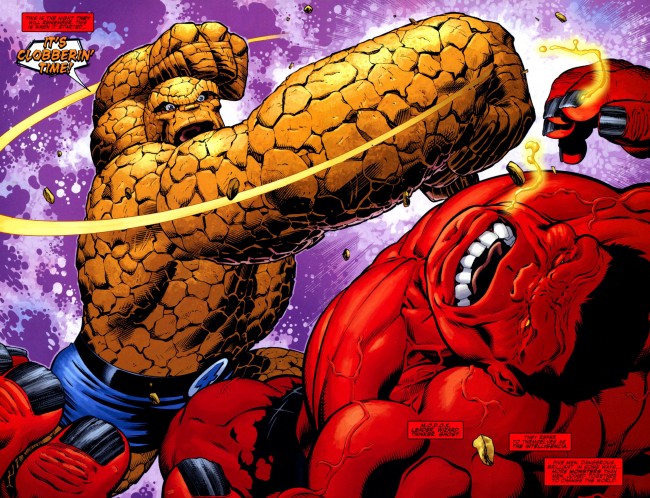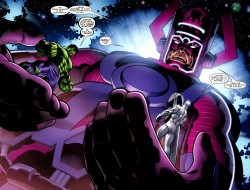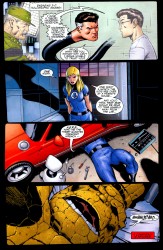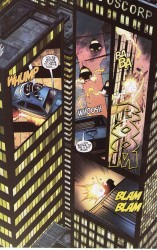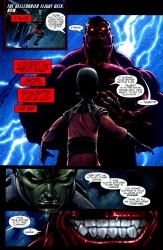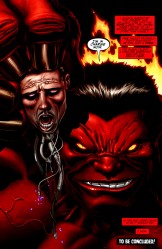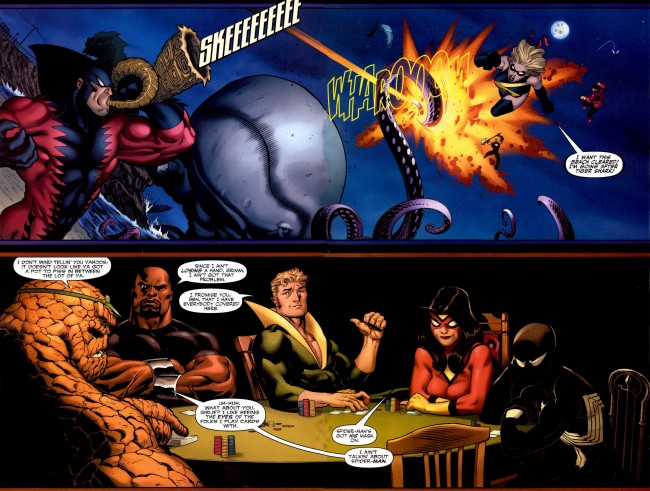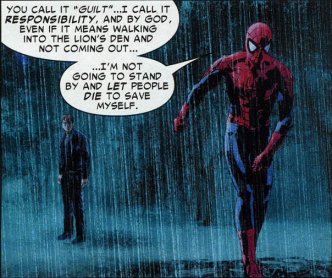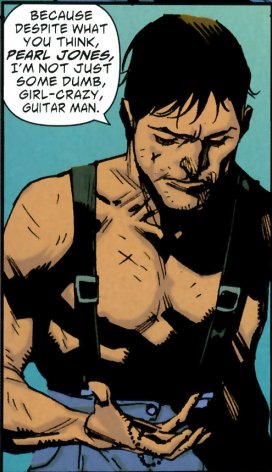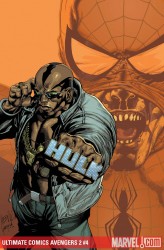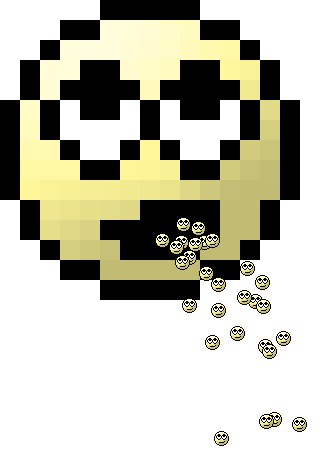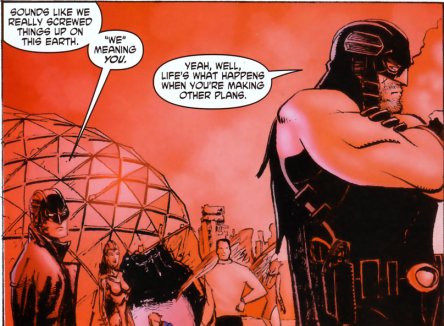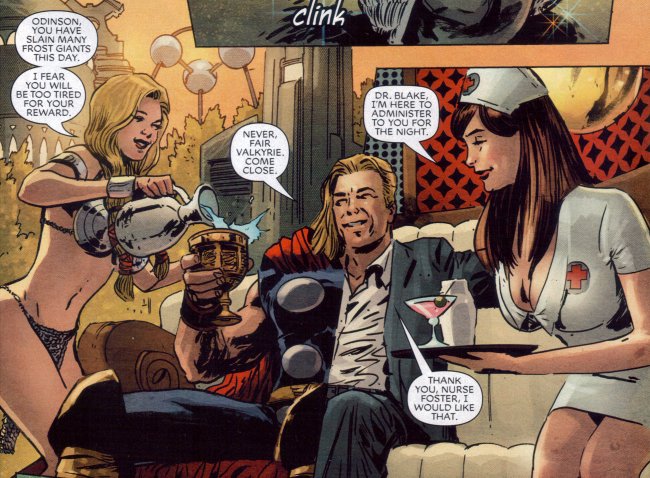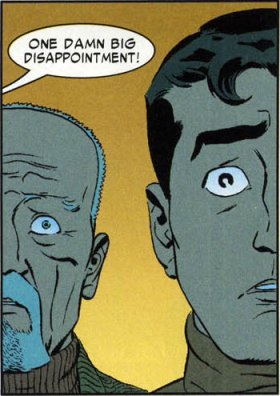Over the last year or so, I’ve really grown to appreciate Jeph Loeb. I don’t think that he’s a particularly good writer, and he’s been justifiably parodied in Gavin’s Ultimate Edit series, but I do think that he fills a niche that I’ve come to enjoy. He writes very simple, completely un-self conscious stories about superheroes. If you want a dumb comic about dumb dudes wearing dumb tights fighting each other… Loeb’s Hulk is very entertaining.
I’ve liked a few Loeb books before. Spider-Man: Blue and Daredevil: Yellow were entertaining and very pretty, thanks to quality artwork from Tim Sale. While they tended to be fairly emotionally manipulative, they also really got at what makes Peter Parker or Matt Murdock work. A sheepish Peter Parker being tended by Gwen Stacy and Mary Jane, looking they best they’ve looked since John Romita Sr. last drew them, is dead on.
Loeb’s Hulk, though, is his All-Star Batman & Robin the Boy Wonder. ASBAR is distilled Frank Miller, all of his idiosyncrasies and interests packed into a bullet and fired directly at your brain. Hulk is Loeb jettisoning any semblance of emotional connection or nostalgia-as-crutch, instead choosing to focus on the purely superheroic aspects of the superhero genre. There are no secret identities, no real subplots, no supporting cast, none of that. Everything is about Red Hulk. Everything in the book ties back to him, or was caused by him, or is about him.
Hulk is distilled superheroics. While Captain America, Daredevil, New Avengers, and even books like Batman & Robin feature overt influences from other genres and mediums, Hulk really only has two influences: comics about the Hulk and other Jeph Loeb comics. There is no noir, spy, soap opera, manga, or exploitation influence to be found here. Every single twist and turn and plot can be traced back to comic books, whether it is the unstoppable new creation beating up All Your Favorites or a group of women teaming up seemingly because they are women.
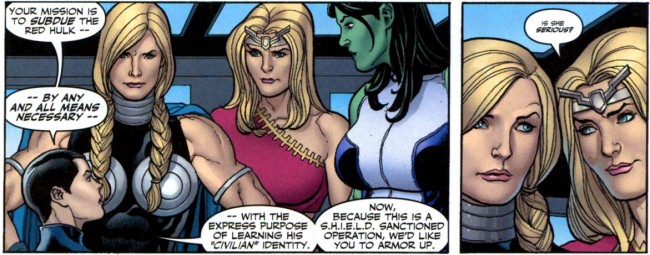
Large and in charge.
This is a book where Moon Knight, the Sentry, and Ms Marvel team up because they kinda resemble Batman, Superman, and Wonder Woman– DC’s Trinity. They not only team up as a replacement Trinity, but Loeb’s dialogue for them is exactly the same as it would be if they were the real thing.
 The introduction of Red Hulk is equal parts appealing and off-putting. He beats, outsmarts, embarrasses, and harasses everyone he goes up against, coming out on top each time. He’s the unstoppable force and immovable object all rolled up into one being. We’ve seen this before, where an author’s pet character is put over by beating up a recognizable character, but Loeb ups the ante to an absurd degree. Red Hulk punches out the Watcher in a beautiful spread. He beats Thor with his own hammer through the kind of plot maneuvering little kids routinely practice.
The introduction of Red Hulk is equal parts appealing and off-putting. He beats, outsmarts, embarrasses, and harasses everyone he goes up against, coming out on top each time. He’s the unstoppable force and immovable object all rolled up into one being. We’ve seen this before, where an author’s pet character is put over by beating up a recognizable character, but Loeb ups the ante to an absurd degree. Red Hulk punches out the Watcher in a beautiful spread. He beats Thor with his own hammer through the kind of plot maneuvering little kids routinely practice.
It is loud and it is dumb and it is on a scale that is extremely entertaining. It’s like being in a speeding car on the highway, doing 90 in the fast lane, during a pouring rainstorm. You know how things should work, and generally they perform as expected, but there’s that moment when you pull the wheel left and the car’s momentum shifts and suddenly you’re spinning and completely out of control. Then you stop spinning and you laugh and shake and laugh some more. It’s stupid, and it isn’t a good thing, but you get a weird rush off it.
Basically, what I’m saying here is that, when it comes to Hulk, the best possible comparison is Big Boi and Gucci Mane’s Shine Blockas. Jeph Loeb is the Gucci Mane of comics. He’s not great, but he’s catchy and doing something familiar in a slightly different way. He’s passable, just there to provide a little background noise (‘s gucci) and provide a way for the artists to put some drawings on the page. A little lowest common denominator, not very clever, but gets the job done. At the same time, the artists are the Big Boi in this extraordinarily tortured metaphor, banging out art that’s intended to impress you and drawing the kind of things they’ve apparently always wanted to draw. You check for it, and you feel a little bad over it, but you still seek it out to see what’s next.
You can look at the plot and work out the mystery yourself (Glenn Talbot is pretty clearly Red Hulk, Red She-Hulk is probably Betty Ross, Thunderbolt almost definitely isn’t dead), but all of that is beside the point.
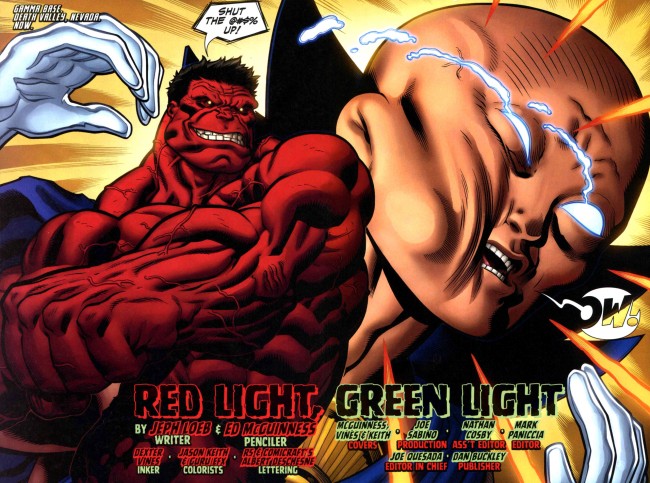
The mystery is just a storytelling engine, something to throw Red Hulk into fight scenes with other characters. Loeb builds it up and ignores it in equal amounts. Domino sees Red Hulk transform, which sets off a story arc about Red Hulk trying to protect his secret identity. During the course of the story, there are no hints about who he is or what she saw, besides a guy in a hat turning into a monster.
Hulk is a book where the plot is secondary, at best, to the action. This is due in no small part to just how Jeph Loeb writes comics. From an interview on CBR a couple years ago:
Hulk fans will surely agree Ed McGuinness’ exaggerated and highly expressive style is uniquely suited for depicting the adventures of Marvel’s green goliath. Appropriately, the artist is himself one of professional comics’ most zealous Hulk devotees. “Ed has wanted to draw the character since he was a kid (and if you know Ed that was like two years ago) – so it’s just a pleasure giving him cool stuff to smash!” Loeb remarked. “And there’s a lot of that!”
“The Hulk is the type character that has affected me on the genetic level, ” Ed McGuinness told CBR News. “There’s just something so cool about this guy who has all the power in the world and can’t do anything to control it. I love the misunderstood monster idea, too. I want the Hulk to be a force of nature! I want the Hulk to wreck stuff! Who doesn’t?”
Writers always talk about “tailoring their scripts” to their artists. Sometimes it means adjusting the number of panels, adding or removing wiggle room, or something like that. When Loeb does it, though, I get the feeling that he’s just writing what his artist wants to draw first, and then fitting his story around that. Grant Morrison’s Seven Soldiers was tailored to all of its artists, but it was still primarily Morrison’s story. Hulk, though, gives Ed McGuinness a chance to draw almost every major Marvel hero doing what they do best: battling each other. And it continues on for all the other artists, too. Frank Cho gets to draw the lady-centric arc. Art Adams draws monsters. Ian Churchill gets to work some new artistic muscles. John Romita Jr gets to take a tour through the Marvel U and draw an amazing Kirby-style spread of the Fantastic Four versus the Hulk.



Comics, for me, are a 50/50 affair. Half of the appeal is in the writing, the other half is in the art.
Hulk is a book where more than half of the appeal is in the art. Loeb gives these guys a chance to go wild, often leaving the plot or common sense in the dust, and the book is better for it. I wouldn’t want every book to be like this one, but
Hulk? I like it a lot.
There are three, technically four, collections out right now. The hardcovers are annoyingly priced (25 or 20 a pop), but the first volume is available in softcover . Personally though, Hulk: Green Hulk/Red Hulk
. Personally though, Hulk: Green Hulk/Red Hulk is the way to go. It’s in Marvel’s oversized hardcover format, which is honestly the absolute best way to read Marvel books, and collects the first couple arcs. Ed McGuinness, Frank Cho, and Arthur Adams’s art looks great at the size. If you’re in the mood for something loud and dumb, give it a try.
is the way to go. It’s in Marvel’s oversized hardcover format, which is honestly the absolute best way to read Marvel books, and collects the first couple arcs. Ed McGuinness, Frank Cho, and Arthur Adams’s art looks great at the size. If you’re in the mood for something loud and dumb, give it a try.

